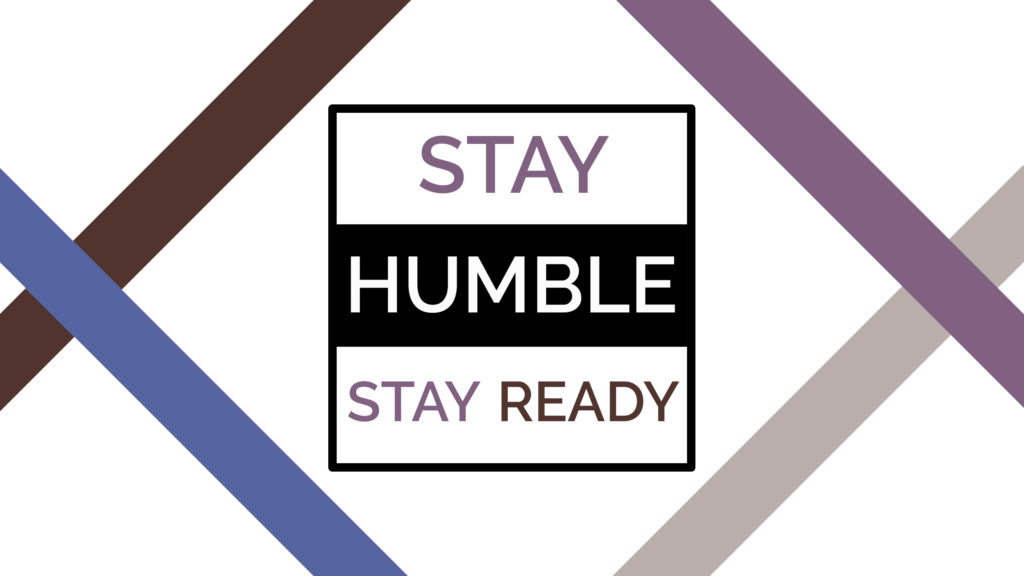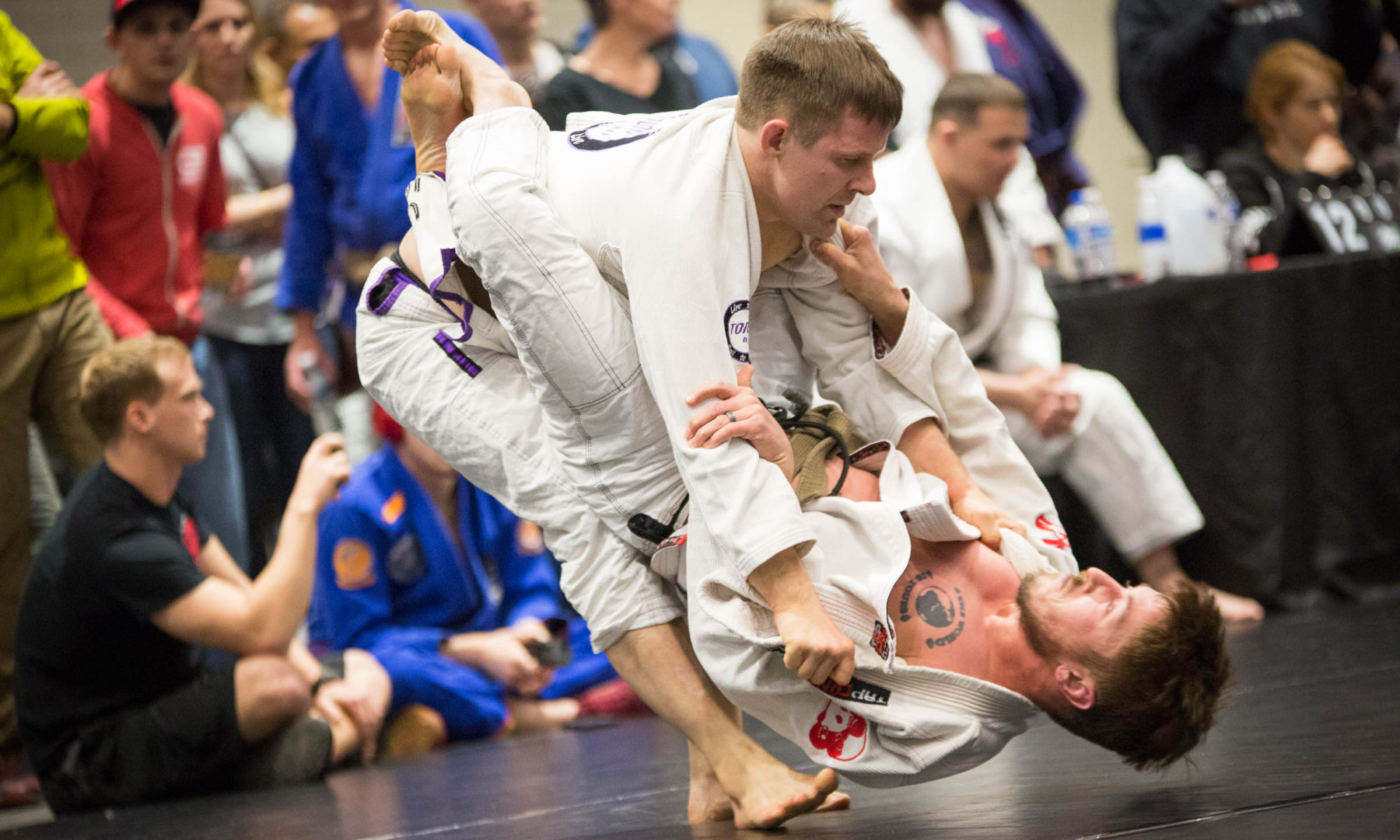Your job at white and blue belt is to learn, reinforce and try to master the fundamentals. Every gym defines what those fundamentals are slightly differently, but however your gym’s fundamentals curriculum is structured, your time at white and blue belt has to end with you knowing it inside and out.
In August, I wrote about how to make an improvement plan while you’re a white or blue belt. A lot of the off-the-mat tactics for improvement — visualization, yoga, meditation — remain the same, and are never going to be bad for you. Those practices are all things I still do as often as I can. As you advance in the belt ranks, though, you can expand your knowledge and skillset — both because you’re going to be able to assimilate more information, and because more techniques become legal in competition.
This doesn’t mean you abandon the basics. Quite the opposite. Refining my understanding of the fundamentals is something I expect to do for the rest of my life. Yet as your knowledge expands, the more you realize how much there is to know.
That’s why structuring your training becomes more important at high blue belt, purple belt and thereabouts. It’s the most efficient way to know what you know, and conversely what you don’t know. Evaluating your knowledge base helps determine your drilling and learning priorities. Of course you should keep coming to class, including the fundamentals class. Extra drilling and focused training during rolling are great ways to get faster, better results in addition to class.
Here are three strategies I’ve used in order to try to improve as much as I can every day, every week and every year.
First, rate yourself from 1-5 in terms of proficiency with the following:
Standing self-defense
Takedowns
Guard sweeps
Guard submissions
Guard passes
Dominant position transitions
Dominant position submissions
Dominant position survival
Dominant position escapes
Footlocks
If you want to get better, you have to first define where your strengths and weaknesses are. This rating system is a tactic I learned from Jake Whitfield. Figure out what segments of your knowledge you feel confident in, and what segments you don’t. (If your gym doesn’t do the Helio Gracie standing self-defense, obviously this doesn’t apply to you, but we do).
Assessment should be regular. The things I’m good at now bear little resemblance to the things I was good at during my white and blue belt years. A lot of that is by design: if you want to be well-rounded, you don’t want one technique to develop into a crutch. At blue belt I used the berimbolo a lot. It’s still a technique I love, but I went away from it at purple belt so I could work on the areas of jiujitsu I understood less well.
To name a better example, when I started jiujitsu, I always used takedowns — I’d done a year of wrestling, so that was what I was most familiar with. But after I got my blue belt, I fell in love with guard, and when competing I wanted to get to the guard as soon as possible. Now I’m working lots of takedowns again, because I never want to neglect any part of the art. If that’s your goal as well, these ratings might be a useful tool.
Second, list your 10 best techniques or series of techniques. List all of the setups, entries and finishes you know for those techniques.
If you want to figure out how little you know about a technique, list everything you know about it. At least, that’s my experience.
When we learn a footlock, for example, we don’t just learn the lock itself. Every technique has a setup, an entry, and a finish. In order to complete a move, we first have to get into the proper place. Very early on in my training, one of my instructors pointed out that a white belt — if allowed to get a world class black belt into a fully locked rear naked choke position — should finish that submission. If you’re a purple, brown or black belt, you have some A-game positions where, if you get someone there, they’re going to have a bad day. Now, expand your setups and entries into that position. The more ways you can access your best material, the better off you are.
You probably spend a lot of time and resources to access your jiujitsu knowledge. I know I do, and when I look back at my notebooks, I’m always surprised at the great setups and entries I learned — but didn’t fully internalize. Maximize your ability to retain the details you learn in class, at seminars and at privates! Make lists, and then break down those lists into their component parts.
Third, make time to drill, and use your drilling time intelligently.
Now you’ve evaluated where your skills are. It’s time to rank what you need to get sharper on!
After you’ve completed the first two steps, you’ll know where your learning priorities are. Now, make sure you rep those things out. Here are few examples of what we do during the 6:30 a.m. drilling classes I run at Triangle Jiu-Jitsu Academy. I list the drill format and then the specific moves I’ll be drilling. You’ll see here that I try to get work in from many different positions, and that I try to drill moves I’m already proficient at as well as moves I’ve recently learned or need to know better. This is a way of improving your A game, B game, and C game techniques. Aside from making you more well-rounded, we need to keep it fresh and stay learning. (Feel free to borrow ideas from these sheets — I list the moves I’ll be drilling as a model for my training partners and a reminder to myself).

By exploring in this manner, we can learn completely new things and also see moves you think you know well in a new light. At purple belt, I started regularly using the omoplata: it was a move I worked in from numerous positions and finished in multiple different ways. Over the past year, I’ve been going back through my notes on the position, and learned a few transitions I’d forgotten from an Andre Galvao seminar. I also trained with Dominyka Obelenyte and David Porter, each of whom set up the move in different ways (and in Porter’s case, has different finishing details than I knew before). This opens up whole new categories of drilling.
I’ll do rounds where I just drill setups, just entries, or just finishes, and then rounds where I knit parts together. If I just keep “drilling the omoplata,” my knowledge of the move stays the same. If I break it down into drilling omoplata setups, omoplata position entries, and finishing the omoplata, the possibilities expand geometrically.
If you really want to blow your own mind, throw transitions into the mix. Your opponent rolls to escape the omoplata — now what? I’ll bet you know a few things to do that you could stand to drill more.
Jiujitsu really is an infinite art. There is always more to learn. This is what makes it exciting, and what makes preparation so useful.
